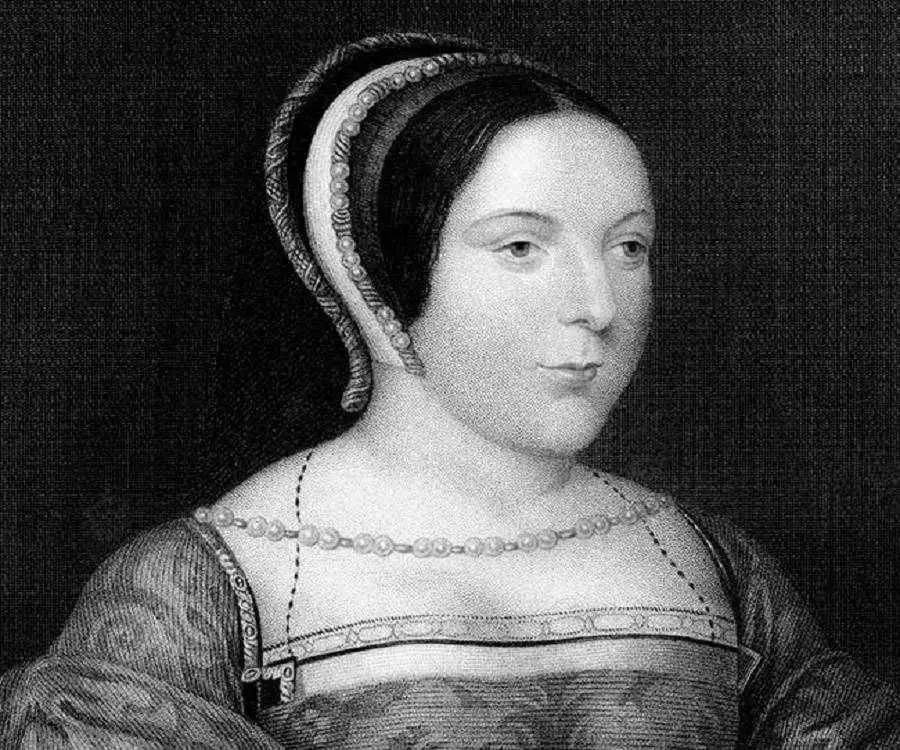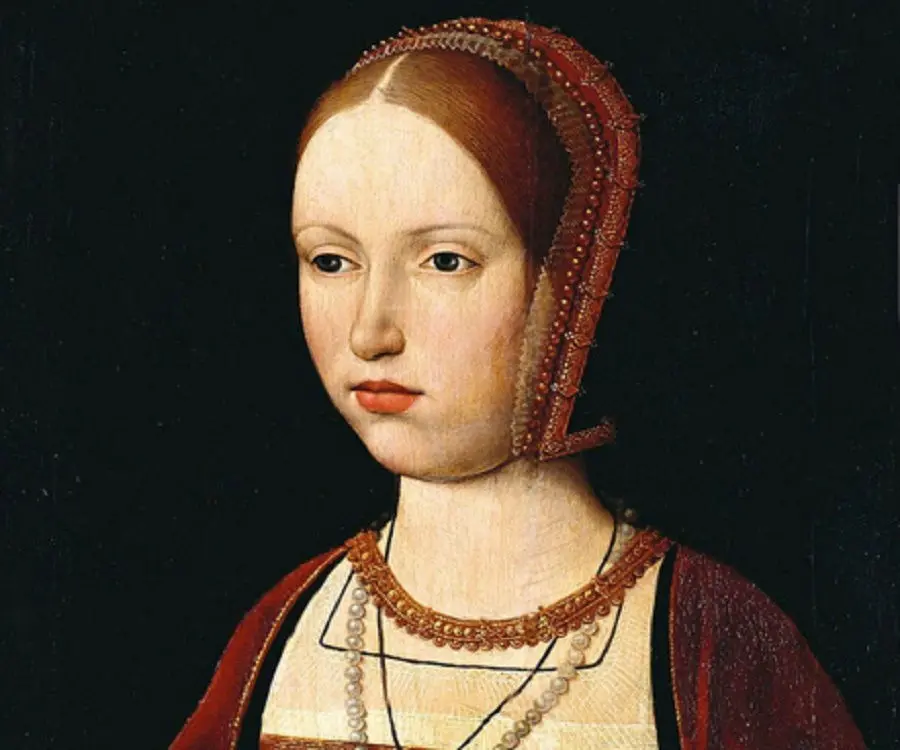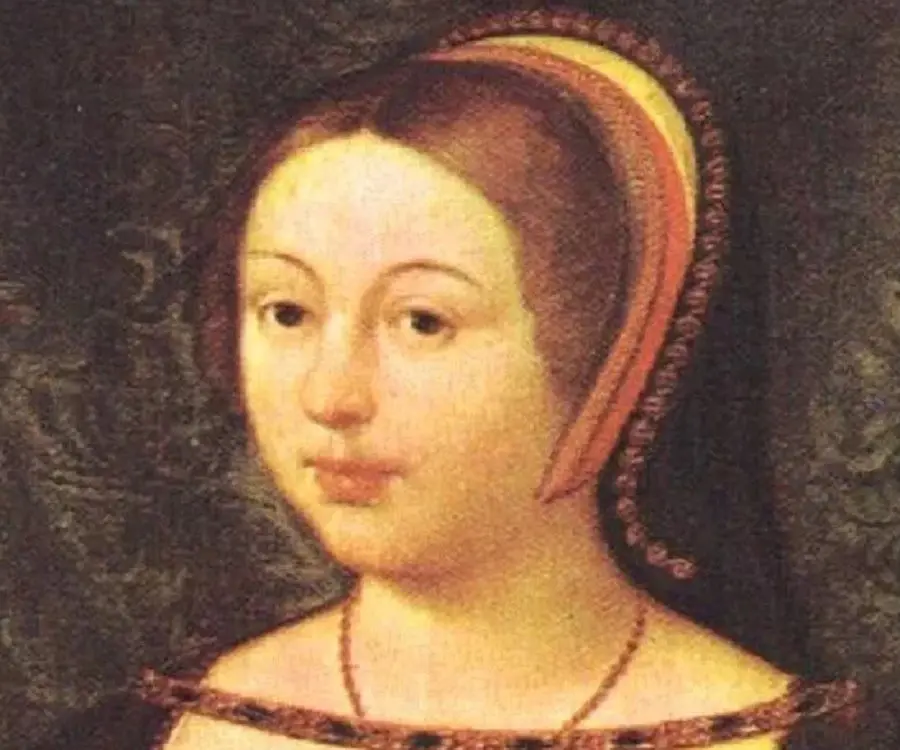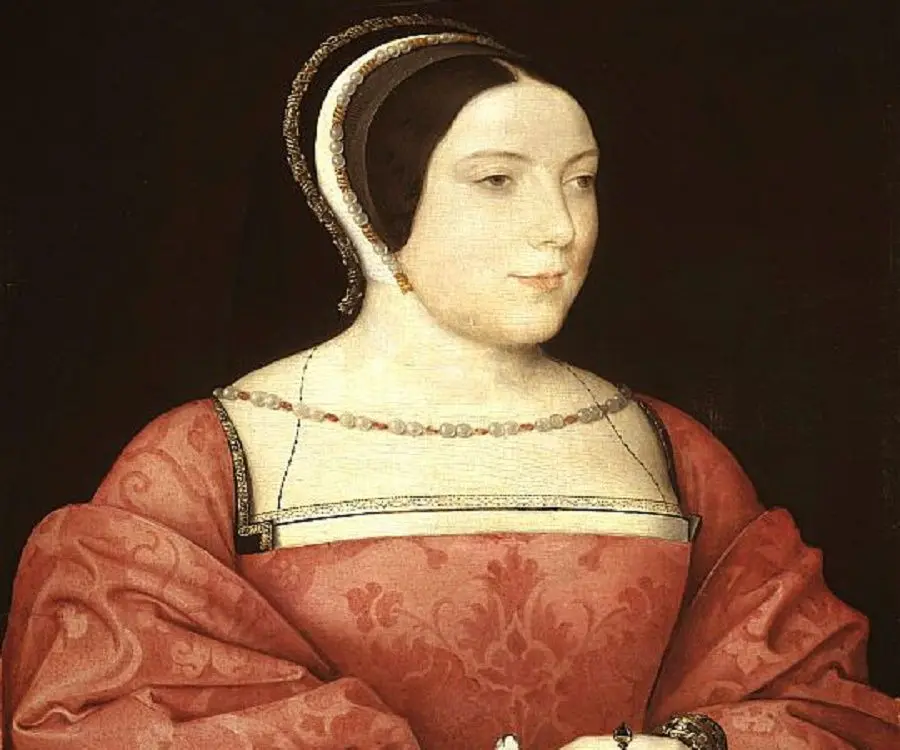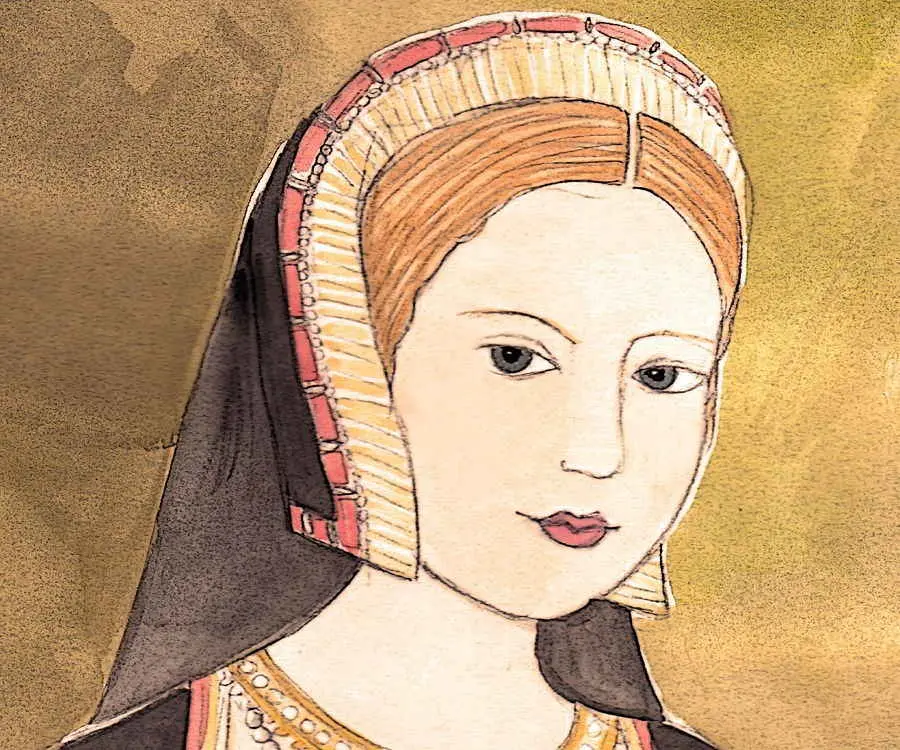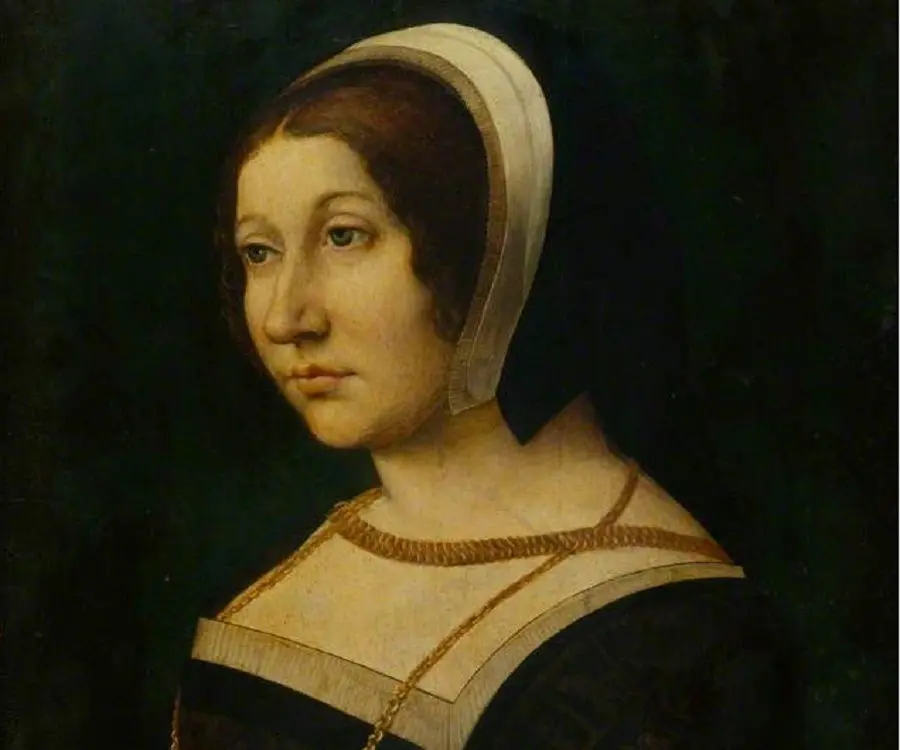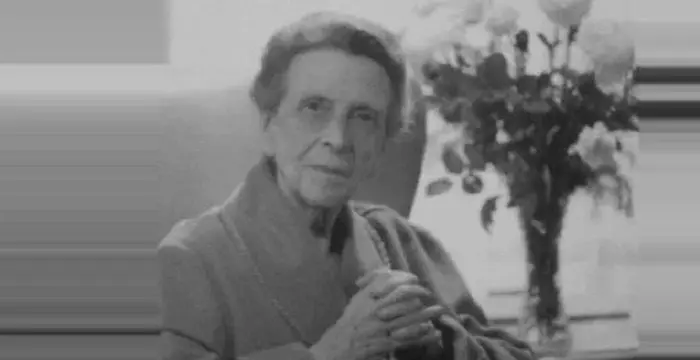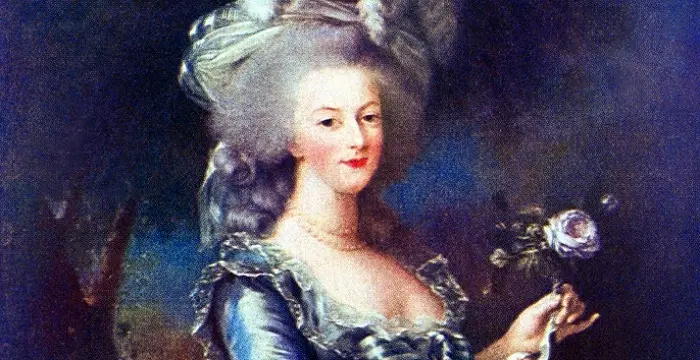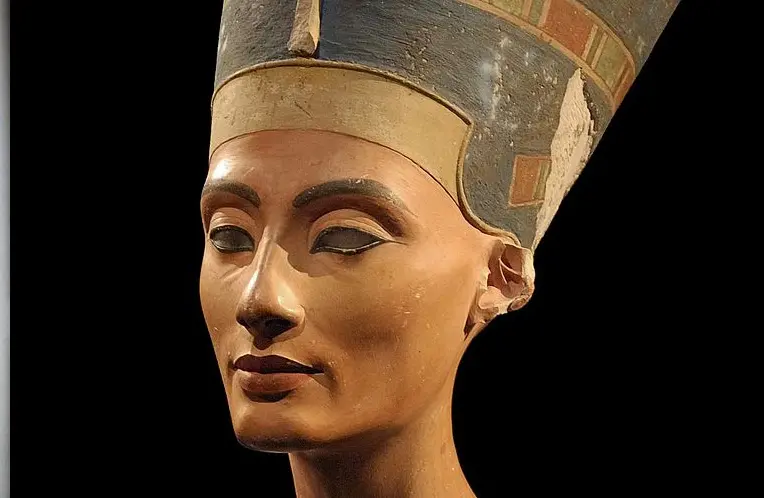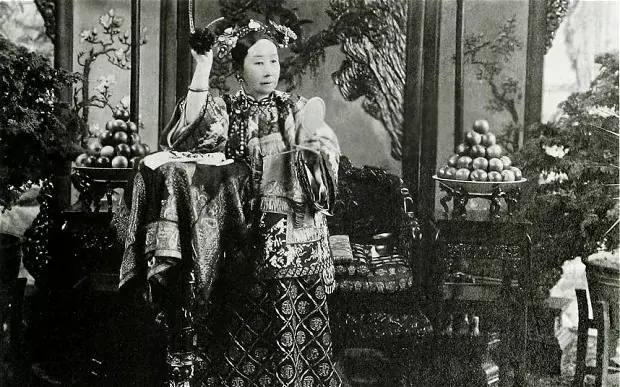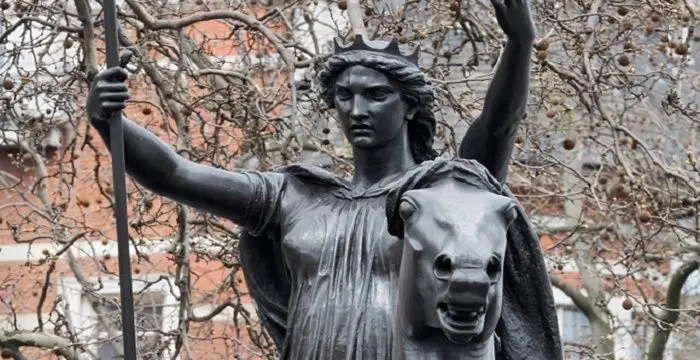
Margaret Tudor - Queen Consort of Scotland, Family and Personal Life
Margaret Tudor's Personal Details
Margaret Tudor was the Queen Consort of Scotland through her marriage to King James IV
| Information | Detail |
|---|---|
| Birthday | November 28, 1489 |
| Died on | October 18, 1541 |
| Nationality | Scottish |
| Famous | Historical Personalities, Empresses & Queens, Empresses, Queen Consort of Scotland, Queens, Scottish Women |
| Spouses | 1st Lord Methven (m. 1528), Henry Stewart, 6th Earl of Angus (m. 1514; div. 1527), Archibald Douglas, James IV of Scotland (m. 1503; d. 1513) |
| Birth Place | Westminster Palace, London, Middlesex, Kingdom of England |
| Gender | Female |
| Father | Henry VII of England |
| Mother | Elizabeth of York |
| Sun Sign | Sagittarius |
| Born in | Westminster Palace, London, Middlesex, Kingdom of England |
| Famous as | Queen Consort of Scotland |
| Died at Age | 51 |
Margaret Tudor's photo
Who is Margaret Tudor?
Margaret Tudor was an English princess who later became the Queen Consort of Scotland through her marriage to James IV of Scotland. After his death, she served as the regent for their son, James V of Scotland. Known to be whimsical and passionate in nature, Margaret’s biggest concern, throughout her life, was her own survival. However, she also sought to bring a better understanding between her native kingdom and her adopted one. She was one of the daughters of Henry VII and his wife, Elizabeth of York. Her father arranged her marriage with James IV hoping that the union would end Scotland’s support for a pretender named Perkin Warbeck who had his eyes on the English throne. James IV and Margaret were subsequently married by proxy in January 1503 and met in person when Margaret came to Scotland later that year. After James IV’s death in 1513, Margaret assumed the role of a regent for her underage son. She played an instrumental role in the conflict between the pro-French and the pro-English factions in the Scottish court and often changed her allegiances in accordance with her financial interest. She married twice more and came to hate both of her husbands. Margaret eventually lost her control over her son. Despite this, she spent the remainder of her life maintaining a prominent presence in the court.
// Famous Empresses
Jetsun Pema
Jetsun Pema is the Queen consort of Bhutan. Check out this biography to know about her childhood, family life, achievements and fun facts about her life.
Princess Alice of Battenberg
Princess Andrew of Greece and Denmark, also known as Princess Victoria Alice Elizabeth Julia Marie of Battenberg, was the mother of Prince Philip, Duke of Edinburgh and mother-in-law of Queen Elizabeth II. This biography profiles her childhood, famil
Marie Antoinette
Marie Antoinette was the Queen of France and Navarre from 1774 to 1792. who played a major role in provoking the French Revolution. This biography of Marie Antoinette provides detailed information about her childhood and life
Childhood & Early Life
Margaret Tudor was born on November 28, 1489, in Westminster Palace, to Henry VII of England and Elizabeth of York. She was one of Henry VII’s eight legitimate children. She had four brothers: Arthur, Prince of Wales; Henry VIII, King of England; Edward; and Edmund; and three sisters: Mary, Queen of France; Elizabeth; and Katherine. Edward, Edmund, Elizabeth, and Katherine did not survive infancy.
Her parents named her after Margaret Beaufort, Countess of Richmond and Derby, who was her paternal grandmother. Her baptism took place at St. Margaret's Church, Westminster.
According to contemporary views, the daughters of kings were invaluable assets to be used for financial, political, diplomatic, and social gains for the family. Her father was considering a union between her and James IV even before she turned six.
James IV (born March 17, 1473) was considerably older than her. However, England needed Scotland to cease backing Perkin Warbeck, who was pretending to be Richard of Shrewsbury, Duke of York, one of the sons of Edward IV, and claiming that he was a legitimate heir to the English throne.
It was also possible that Henry VII was looking for a way to unite the English and Scottish crowns one day. On September 30, 1497, a truce was finally reached between the kingdoms and the marriage was being considered seriously once more.
Some among the English royalty questioned the match, fearing that it might one day lead to a Stewart being the king of England. Henry VII brushed aside such a notion, saying that if such a thing were to happen, England would not be absorbed by Scotland, but rather Scotland by England.
The Treaty of Perpetual Peace was concluded between the kingdoms on January 24, 1502, and the marriage treaty was signed the very day. Margaret and James IV were married by proxy precisely a year later, on January 25, 1503, at Richmond Palace.
Queen Consort of Scotland
The wedding was a lavish affair. The new queen of Scotland was allocated a large wardrobe of attire and James IV declared that a considerable amount of land and a number of houses would be transferred to her possession.
Accompanied by a large group of courtiers, Margaret entered Scotland in 1503. She met her husband and the rest of the Scottish court at Berwick upon Tweed on 1 August. A week later, on 8 August, their marriage was confirmed in person at Holyrood Abbey, Edinburgh.
Margaret and James had six children together: James, Duke of Rothesay (February 21. 1507 – February 27, 1508); Unknown Daughter (died shortly after birth on July 15, 1508); Arthur Stewart, Duke of Rothesay (October 20, 1509 – July 14, 1510); James V (April 10, 1512 – December 14, 1542); Unknown Daughter (died shortly after birth in November 1512); and Alexander Stewart, Duke of Ross (April 30, 1514 – December 18, 1515). None of her children except for James V made it through infancy.
James IV was a very able king. He was also a true Renaissance royalty with a deep love for science and mechanics. Furthermore, he was highly-educated, a fluent polyglot, and according to various sources, a very handsome man. Not much is known about the relationship between him and Margaret but her father provided a scanty dowry for her which did not help in improving relations between Scotland and England.
Following the death of Henry VII in 1509, his son Henry VIII became the new king of England. He had neither his father’s patience nor intelligence and promptly started preparing for a war against France. The Treaty of Perpetual Peace did not last a decade since its conclusion as James IV was forced to attack England to honour the Auld Alliance. He was killed on September 9, 1513, at the Battle of Flodden.
Regent of Scotland
Margaret was very vocal in her opposition to the war but James IV still named her as the regent for their son. The only stipulation was that she had to remain a widow. The Battle of Flodden did not only cause the death of the king, but it was also an utter disaster for Scotland itself.
The Parliament was held at Stirling shortly after the king’s death and Margaret’s status as the regent was confirmed. Things were quite complicated for her. In addition to being the first woman to hold such power in Scotland, she was also the sister of an enemy king.
The Scottish court became divided into two clear factions. One group clearly favoured France’s influence on Scotland. They believed that John Stewart, 2nd Duke of Albany, should be the regent for the infant prince instead of Margaret. He was the closest male relative of the king. To the pro-French group among the nobles, he represented the very essence of the Auld Alliance.
Margaret, almost by default, became the leader of the pro-English faction. Initially, she demonstrated all the necessary skills needed to be a successful administrator. She managed to bring a temporary end to the conflict between the parties and successfully pursued tentative peace with England. However, she then undid all that good work by letting her emotion override her good sense when she became deeply attracted to Archibald Douglas, 6th Earl of Angus.
Margaret needed allies and so she became closer to the powerful House of Douglas. Angus did not have a great reputation. Even his uncle, the cleric and poet Gavin Douglas, dubbed him a “young witless fool". Margaret and Angus married secretly on August 6, 1514, in the parish church of Kinnoull, near Perth.
The marriage ended up deteriorating an already strained relationship between Margaret and the Scottish nobility. Furthermore, as she did exactly what she was not supposed to do by the terms of the late king’s will, she lost the regency.
Albany was called back to Scotland and he officially was appointed as the regent in July 1515. Margaret attempted a minor rebellion by keeping James V and Alexander with her but this was unsuccessful. Albany took charge of the princes and Margaret, who was pregnant with Angus’ child at the time, went to live in Edinburgh. Their daughter, Margaret Douglas, Countess of Lennox, was born on October 8, 1515.
Henry VIII had been intending to get involved in Scottish politics for a while. He wanted his sister to live in England with her children but Margaret refused several times, well aware of the possibility that such measure might result in James V losing his crown. However, after her children had been taken away from her, she escaped from Scotland. Angus did not accompany her. Instead, he reached out to the regent to make peace.
Margaret was in England for about a year and returned to the north in 1517. She was allowed limited access to her children. While initially she seemed to have mended her relationship with her estranged husband, it began to grow sour again.
She found out about his affairs and heavily hinted about a possible divorce in her correspondence to her brother. Henry VIII, however, was against the idea, as Angus had proved himself to be useful against the pro-French faction.
Moreover, the young Henry VIII was conservative and puritanical in his beliefs and was staunchly against the concept of divorce. Frustrated by this, Margaret sought to become an ally of the pro-French faction and joined others in requesting Albany to return from France as soon as possible to resume his duties as the regent. However, he had no intention of doing so and simply told her that she could act as the regent herself.
Her actions in the next few years caused much bewilderment. The bitter dispute between the husband and wife continued and it played a central role in Scottish politics. Albany’s hold on power was threatened by James Hamilton, 1st Earl of Arran. Margaret switched sides between them back and forth to suit her interests.
Albany returned to Scotland in November 1521 and was greeted by the Queen-Dowager. Albany soon started to bring about changes in a political system that was in complete disarray after years of infighting. He had the full support of Margaret, whose husband was sent into exile right after the regent landed in Scotland.
Soon enough, the rumours of a possible romantic relationship between Margaret and Albany began to spread. Angus and his allies were responsible for this. However, as the later events would show, their collaboration was driven purely by self-interest.
In the 1520s, Scotland was engaged in border wars with England that proved to be catastrophic for the country. Albany finally lost his grip on power in 1524 when Margaret led a successful coup d'état against him. Albany left for France and Margaret, supported by Arran and the Hamiltons, got her son back in Edinburgh. She had the people’s support as well.
In August 1524, the parliament formally ended the regency and the 12-year-old James V was handed the full kingly powers. However, others, including his mother, would continue to exercise control over him for years to come.
Margaret still had several issues that needed her attention. Her over-reliance on the Hamiltons displeased other nobles and her brother had let Angus come into Scotland once more. Instead of dealing with such urgent matters, she began a passionate relationship with Henry Stewart, one of the younger brothers of Lord Avondale.
Stewart received rapid promotions whereas her dispute with her husband further degraded into a murderous farce. On November 23, 1524, while Angus was trying to force his way into Edinburgh, Margaret used cannons to fire upon his forces.
Despite Margaret’s efforts, Angus was successful in getting into the city and securing a spot for himself in the council of regency in February 1525. In July 1526, Angus was entrusted with James V’s guardianship. He virtually held him prisoner and ruled in his stead.
Margaret had kept her correspondence with Albany despite the coup and he eventually helped her getting the approval for a divorce from Pope Clement VII in March 1527. She and Stewart married on March 3, 1528.
A few weeks after Margaret’s third marriage, James V managed to escape from Angus and went straight back to Margaret. Angus, after fortifying himself in Tantallon Castle for almost a year, fled to England once more.
In James V’s new administration, both Margaret and her husband held important positions. She continued her efforts to improve the relations between England and Scotland and even once tried to arrange a meeting between her brother and son but it did not eventually take place. James V was deeply suspicious of Henry VIII because of his continuous support for Angus. It frustrated Margaret who even divulged state secrets to Henry VIII.
Later Life & Death
In time, Margaret became frustrated with Stewart as well. She wanted another divorce but her son was opposed to it. She thought James V had been bribed by Stewart and tried to run off to England but was caught at the border.
She eventually reconciled with Stewart and developed a relationship of excellent understanding with her new daughter-in-law, Marie de Guise. She maintained a significant presence in the court throughout the rest of her life.
On October 18, 1541, Margaret passed away at Methven Castle, in Perthshire, after reportedly suffering from palsy. She was interred at the Carthusian Charterhouse in Perth. James V was not at her bedside when she died. He arrived later and confiscated all her properties.
Her father’s line, the Tudor dynasty, ended with her niece Elizabeth I of England. Later, her great-grandson, James VI of Scotland or James I of England unified the crowns.
In the BBC historical drama ‘The Tudors’ (2007-10), the character of Margaret Tudor was an amalgamation of Margaret and her sister, Mary. The producers did not want the viewers to confuse Princess Mary, sister of Henry VIII, with Princess Mary, daughter of Henry VIII. English actress Gabrielle Anwar portrayed the role.
Trivia
James IV named a Scottish warship Margaret in her honour.
// Famous Scottish Women
Sara MacDonald
Sara MacDonald is a Scottish publicist who is married to Oasis rock star Noel Gallagher. Check out this biography to know about her birthday, childhood, family life, achievements and fun facts about her.
Joan Templeman
Joan Templeman is the wife of business tycoon Richard Branson. Let’s take a look at her family, personal life, age, birthday, etc.
Annie Lennox
Annie Lennox is a singer famous for her work with Eurythmics, a group she formed with the musician David A. Stewart. This biography of Annie Lennox provides detailed information about her childhood, life, achievements, works & timeline.
Margaret Tudor biography timelines
- // 17th Mar 1473James IV (born March 17, 1473) was considerably older than her. However, England needed Scotland to cease backing Perkin Warbeck, who was pretending to be Richard of Shrewsbury, Duke of York, one of the sons of Edward IV, and claiming that he was a legitimate heir to the English throne.
- // 28th Nov 1489Margaret Tudor was born on November 28, 1489, in Westminster Palace, to Henry VII of England and Elizabeth of York. She was one of Henry VII’s eight legitimate children. She had four brothers: Arthur, Prince of Wales; Henry VIII, King of England; Edward; and Edmund; and three sisters: Mary, Queen of France; Elizabeth; and Katherine. Edward, Edmund, Elizabeth, and Katherine did not survive infancy.
- // 30th Sep 1497It was also possible that Henry VII was looking for a way to unite the English and Scottish crowns one day. On September 30, 1497, a truce was finally reached between the kingdoms and the marriage was being considered seriously once more.
- // 24th Jan 1502 To 25th Jan 1503The Treaty of Perpetual Peace was concluded between the kingdoms on January 24, 1502, and the marriage treaty was signed the very day. Margaret and James IV were married by proxy precisely a year later, on January 25, 1503, at Richmond Palace.
- // 1503Accompanied by a large group of courtiers, Margaret entered Scotland in 1503. She met her husband and the rest of the Scottish court at Berwick upon Tweed on 1 August. A week later, on 8 August, their marriage was confirmed in person at Holyrood Abbey, Edinburgh.
- // 1509 To 9th Sep 1513Following the death of Henry VII in 1509, his son Henry VIII became the new king of England. He had neither his father’s patience nor intelligence and promptly started preparing for a war against France. The Treaty of Perpetual Peace did not last a decade since its conclusion as James IV was forced to attack England to honour the Auld Alliance. He was killed on September 9, 1513, at the Battle of Flodden.
- // 6th Aug 1514Margaret needed allies and so she became closer to the powerful House of Douglas. Angus did not have a great reputation. Even his uncle, the cleric and poet Gavin Douglas, dubbed him a “young witless fool". Margaret and Angus married secretly on August 6, 1514, in the parish church of Kinnoull, near Perth.
- // Jul 1515 To 8th Oct 1515Albany was called back to Scotland and he officially was appointed as the regent in July 1515. Margaret attempted a minor rebellion by keeping James V and Alexander with her but this was unsuccessful. Albany took charge of the princes and Margaret, who was pregnant with Angus’ child at the time, went to live in Edinburgh. Their daughter, Margaret Douglas, Countess of Lennox, was born on October 8, 1515.
- // 1517Margaret was in England for about a year and returned to the north in 1517. She was allowed limited access to her children. While initially she seemed to have mended her relationship with her estranged husband, it began to grow sour again.
- // Nov 1521Albany returned to Scotland in November 1521 and was greeted by the Queen-Dowager. Albany soon started to bring about changes in a political system that was in complete disarray after years of infighting. He had the full support of Margaret, whose husband was sent into exile right after the regent landed in Scotland.
- // 1524In the 1520s, Scotland was engaged in border wars with England that proved to be catastrophic for the country. Albany finally lost his grip on power in 1524 when Margaret led a successful coup d'état against him. Albany left for France and Margaret, supported by Arran and the Hamiltons, got her son back in Edinburgh. She had the people’s support as well.
- // Aug 1524In August 1524, the parliament formally ended the regency and the 12-year-old James V was handed the full kingly powers. However, others, including his mother, would continue to exercise control over him for years to come.
- // 23rd Nov 1524Stewart received rapid promotions whereas her dispute with her husband further degraded into a murderous farce. On November 23, 1524, while Angus was trying to force his way into Edinburgh, Margaret used cannons to fire upon his forces.
- // Feb 1525 To Jul 1526Despite Margaret’s efforts, Angus was successful in getting into the city and securing a spot for himself in the council of regency in February 1525. In July 1526, Angus was entrusted with James V’s guardianship. He virtually held him prisoner and ruled in his stead.
- // Mar 1527 To 3rd Mar 1528Margaret had kept her correspondence with Albany despite the coup and he eventually helped her getting the approval for a divorce from Pope Clement VII in March 1527. She and Stewart married on March 3, 1528.
- // 18th Oct 1541On October 18, 1541, Margaret passed away at Methven Castle, in Perthshire, after reportedly suffering from palsy. She was interred at the Carthusian Charterhouse in Perth. James V was not at her bedside when she died. He arrived later and confiscated all her properties.
- // 2007 To 2010In the BBC historical drama ‘The Tudors’ (2007-10), the character of Margaret Tudor was an amalgamation of Margaret and her sister, Mary. The producers did not want the viewers to confuse Princess Mary, sister of Henry VIII, with Princess Mary, daughter of Henry VIII. English actress Gabrielle Anwar portrayed the role.
// Famous Queens
Jetsun Pema
Jetsun Pema is the Queen consort of Bhutan. Check out this biography to know about her childhood, family life, achievements and fun facts about her life.
Princess Alice of Battenberg
Princess Andrew of Greece and Denmark, also known as Princess Victoria Alice Elizabeth Julia Marie of Battenberg, was the mother of Prince Philip, Duke of Edinburgh and mother-in-law of Queen Elizabeth II. This biography profiles her childhood, famil
Marie Antoinette
Marie Antoinette was the Queen of France and Navarre from 1774 to 1792. who played a major role in provoking the French Revolution. This biography of Marie Antoinette provides detailed information about her childhood and life
Nefertiti
Neferneferuaten Nefertiti was an Egyptian queen and chief consort of Akhenaten, an Egyptian Pharaoh. This biography profiles her childhood, family, life as queen, accomplishments, death, and other facts.
Empress Dowager Cixi
Empress Dowager Cixi was a Chinese empress dowager and regent of the Qing Dynasty. This biography profiles her childhood, rise to power, rule, administration and other interesting facts.
Boudica
Boudica was a queen of the Celtic Icenic tribe, who led an uprising against Roman invaders. Check out this biography to know about her childhood, family, achievements, etc.
Margaret Tudor's FAQ
What is Margaret Tudor birthday?
Margaret Tudor was born at 1489-11-28
When was Margaret Tudor died?
Margaret Tudor was died at 1541-10-18
Where was Margaret Tudor died?
Margaret Tudor was died in Methven Castle
Which age was Margaret Tudor died?
Margaret Tudor was died at age 51
Where is Margaret Tudor's birth place?
Margaret Tudor was born in Westminster Palace, London, Middlesex, Kingdom of England
What is Margaret Tudor nationalities?
Margaret Tudor's nationalities is Scottish
Who is Margaret Tudor spouses?
Margaret Tudor's spouses is 1st Lord Methven (m. 1528), Henry Stewart, 6th Earl of Angus (m. 1514; div. 1527), Archibald Douglas, James IV of Scotland (m. 1503; d. 1513)
Who is Margaret Tudor's father?
Margaret Tudor's father is Henry VII of England
Who is Margaret Tudor's mother?
Margaret Tudor's mother is Elizabeth of York
What is Margaret Tudor's sun sign?
Margaret Tudor is Sagittarius
How famous is Margaret Tudor?
Margaret Tudor is famouse as Queen Consort of Scotland
